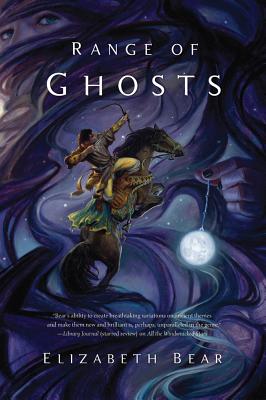Range of Ghosts
 I’ve always wanted to write an epic fantasy.
I’ve always wanted to write an epic fantasy.
A real epic fantasy, something with sweep and scope, tumbling empires, wizards and warlocks, monstrous fantastical beasts and horses of supernatural speed and stamina and crooked old gods vying for power. Something in the sword-and-sorcery mode, but not exactly a Leiberesque low fantasy… or a Tolkienesque high fantasy either. Rather, a book–a series of books, really, because what I had in mind wouldn’t fit in a hundred and fifty thousand words or so–in which the fate of kingdoms hung in the balance, but which wasn’t uncritical of the role of kings.
I wanted to write a book that had the sense of scope and sense of wonder of the books I loved as a young adult… but I kept running into the same problem.
There’s so much epic fantasy out there. And so much of it looks strangely similar. Not identical, of course… but like different chefs’ versions of the same recipe. The ingredients are all the same.
I’m a fan of Guy Gavriel Kay’s Fionavar books, for all their slightly string-pulling manipulativeness. I love the way he takes every possible overplayed trope of fantasy and dumps them all into the same pot–and then pokes them with sticks and makes them fight. But I knew I didn’t want to do that. I wanted a narrative with elements of quest in it, but not simply a quest to reclaim or destroy the magic widget that makes the story go. I wanted a book that would shift scenes from city to city, from culture to culture — and I knew I wanted a world that wasn’t inhabited by nothing but Europeans.
In fact, I was pretty sure I wanted to dispense with the Europeans all together.
In the meantime, I was researching Central Asia and North Africa and their border cultures, and trying to come up with my own world inspired by those settings but not too derivative of them. I didn’t want to write a historical fantasy — or even an ahistorical fantasy, like Conan, which purports to take place in the antediluvian history of our own earth. I very much wanted a fantasy world, it’s own place, with a few thousand years of history as backdrop.